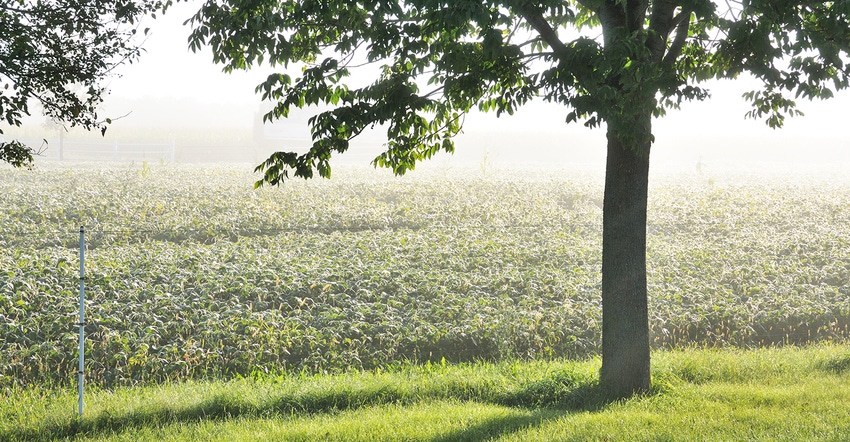
As with field days in other Mid-South states, dicamba drift was a featured part of the late August University of Missouri’s Fisher Delta Research Center field day outside Portageville.
“Obviously, the drift complaints have slowed down in the last couple of weeks because there’s less and less to spray,” says Kevin Bradley, University of Missouri weed scientist. “There are cases still trickling in, though. According to the Missouri Department of Agriculture, we’re just north of 300 complaints under investigation.”
Bradley believes the drift situation for 2017 “is largely over for Missouri. Some of the states north of us are still having trouble, though.”
Now, he says, the question is: “What do we do now? What happens in 2018?
“There are also a lot of questions about yields from both sides. How much did the damage cost (non-dicamba tolerants) crops? How much yield did the dicamba tolerant crops produce? Odds are we won’t know until we run combines through.”
What about research Bradley has been doing this season?
“A couple of weeks ago, I decided to approach this as answering a few bullet-points I want people to take away from our field days. And it seems the field days have been non-stop lately.
“Why has this happened? Trying to come up with answers for that question is the most controversial for some.”
The companies involved and university weed scientists all seem to agree on three things, says Bradley:
“Physical drift has occurred – drift right out of the sprayer.
“Some tank contamination has occurred.
“If spraying occurs at night into temperature inversions, there can be off-target movement.
“Those things I think everyone is on the same page with. Unfortunately, a fourth bucket regarding volatility is not accepted by all and some companies aren’t onboard. You can put percentages on the amount of blame to place in each bucket – I have beliefs on the numbers in each – but the ‘volatility’ bucket remains the outsider for some folks.
“We have data that supports volatility being a part of the problem otherwise we wouldn’t say it. And surrounding states and research have similar data and support for the volatility bucket. What we’re seeing isn’t much different than what’s being found in Arkansas and Tennessee.”
So what are current recommendations?
“Farmers definitely need recommendations. They don’t have to listen but until someone, whether the EPA or the Missouri Department of Agriculture, comes up with something else, they need to best we have at the moment.
“I have no idea what the future holds in terms of regulations (regarding dicamba application) or if there will be nothing. However, there are many, many calls asking me what to do. You know, ‘I’m thinking about buying seed. What’s your advice?’
“Well, my advice is pretty simple. Everything I’ve seen in 2017 says we need to keep this in the pre-plant, burndown, pre-emergence use pattern. Leave the post-emergence alone. I’m sticking with that because the risk is too great for off-target movement to be spraying this for Palmer (amaranth) and waterhemp in soybeans.
“To be blunt about it, there are farmers who have gotten upset with me for suggesting (dicamba formulations) can be used at all ever again. There are also farmers who got mad at me for saying we shouldn’t use them post-emergence. The whole thing is controversial and there’s no way to get around it.
“My job is to put out what we see is the best available advice based on the science available to us.”
What about the cut-off date in Arkansas of April 15? Is that an option being considered in Missouri?
“I think all options are being looked at. That date could make a lot of sense in the Bootheel. Outside there, though, the state has vastly different geographies and cropping systems between the Bootheel, say, the regions north of I-70, which are heavy in corn and soybeans.”
That leads Bradley to believe if cut-off dates are put in place there will be two: “One for the Bootheel and one for other parts of the state, which are more Midwestern. I doubt outside the Bootheel very few preplant burndowns would have been done by mid-April.
“Of course, nothing is perfect. If a date is put in place, one concern is with sprayers rushing trying to beat the clock.”
About the Author(s)
You May Also Like




